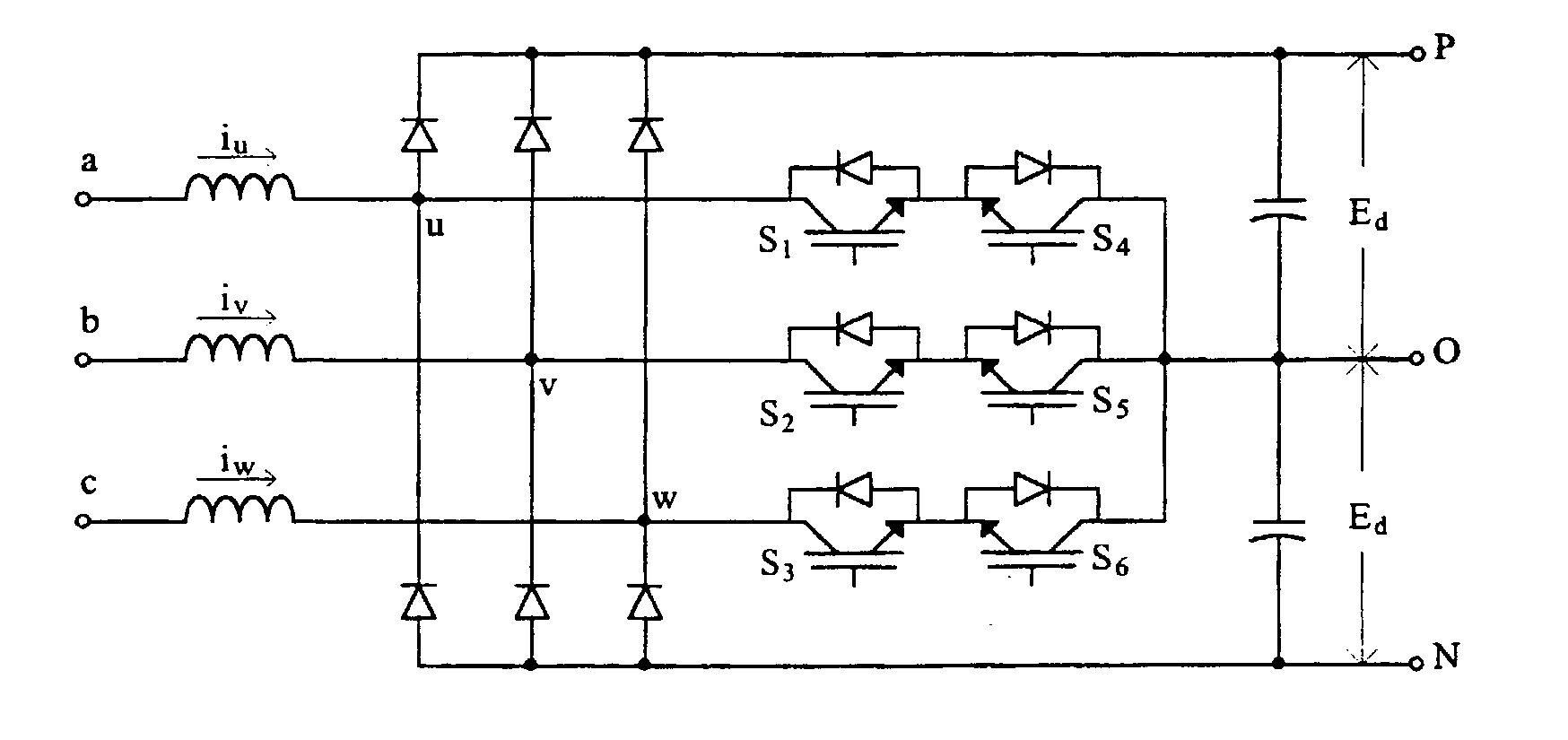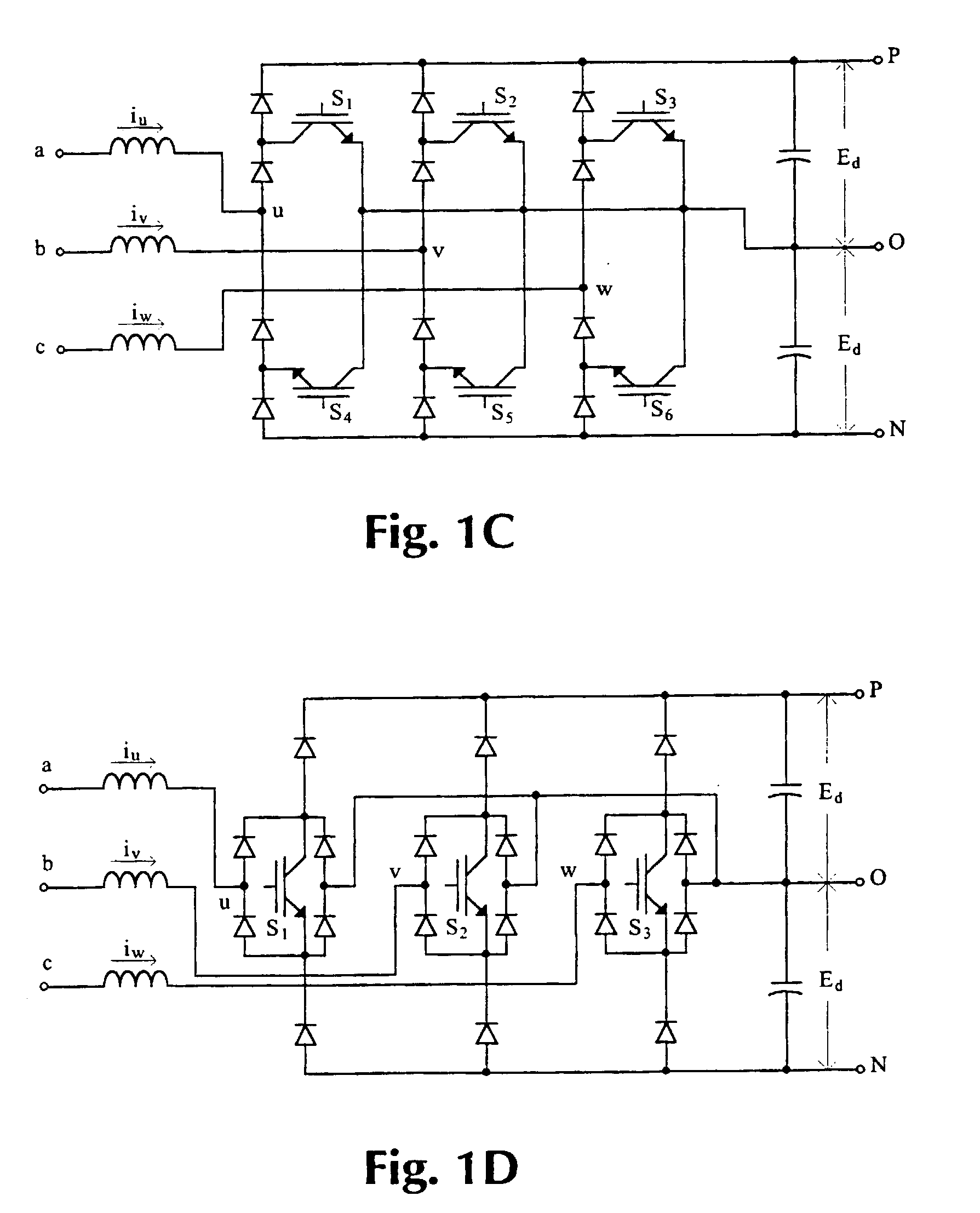Method and control circuitry for a three-phase three-level boost-type rectifier
a three-level boost and rectifier technology, applied in the field of electric rectifiers, can solve the problems of increasing utility pollution, large overvoltage, and additional harmonic losses, and achieve the effects of reducing input current, reducing the quality of waveform generation, and simplifying analysis
- Summary
- Abstract
- Description
- Claims
- Application Information
AI Technical Summary
Benefits of technology
Problems solved by technology
Method used
Image
Examples
Embodiment Construction
[0086] The achievements of the proposed control method will now be described in greater detail. The items considered are: controllability of the output voltage, switching frequency variations, input terminals voltage waveform, input current ripple, neutral potential balance, control circuit simplicity and feasibility demonstrated by simulation and experimental results. It is important to remark that the proposed control method keeps the advantageous characteristics of the three-phase three-level boost-type rectifiers such as:
[0087] Low voltage stress on the switching devices. Since the blocking voltage is only half the total DC-link, it allows the use of power switches with better higher switching frequency capability, smaller voltage drop when conducting and cheaper price.
[0088] There is no possibility of shot-though current on the rectifier arm; and therefore the gating of the switches is simplified and the circuit becomes more robust in operation.
[0089] Generates two output volta...
PUM
 Login to View More
Login to View More Abstract
Description
Claims
Application Information
 Login to View More
Login to View More - R&D
- Intellectual Property
- Life Sciences
- Materials
- Tech Scout
- Unparalleled Data Quality
- Higher Quality Content
- 60% Fewer Hallucinations
Browse by: Latest US Patents, China's latest patents, Technical Efficacy Thesaurus, Application Domain, Technology Topic, Popular Technical Reports.
© 2025 PatSnap. All rights reserved.Legal|Privacy policy|Modern Slavery Act Transparency Statement|Sitemap|About US| Contact US: help@patsnap.com



